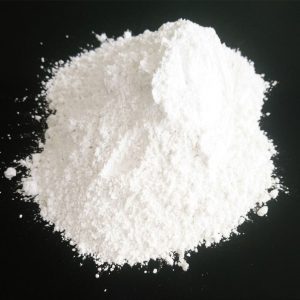Dispersed PTFE Resin Introduction

The composition of dispersed PTFE Resin is nearly 100% PTFE (polytetrafluoroethylene) resin. Dispersed PTFE resin is produced using a dispersion method and is suitable for paste extrusion, also known as paste extrusion-grade PTFE resin. It possesses various excellent properties of PTFE resin and can be processed into continuous lengths of thin-walled tubes, rods, wire and cable insulation, gaskets, and more.
Production Process Introduction
The dispersed PTFE resin powder is pre-pressed into a sheet shape using a rolling machine, and then enters a vulcanizing machine where it is heated for several tens of minutes at 200-370°C and 100 to 1000 atmospheres of pressure to produce the polytetrafluoroethylene sheet material that you understand and recognize. The dispersed PTFE resin powder can also be directly added to a mold and produced into any shape of PTFE product under a pressure of 200-370°C and 100-1000 atmospheres of pressure. If 1% of paraffin wax is added to the dispersed PTFE resin, it can be repeatedly rolled to produce PTFE tape for pipeline installation. The large compressor piston ring with a diameter of 1050 millimeters made from it has a longer continuous service life. Its main performance is the “secondary processing performance” (not fully polymerized, fully polymerized during secondary processing), which can be used to manufacture any PTFE parts.
Features of Dispersed PTFE Resin
The dispersed PTFE is a powdered resin that possesses excellent thermal stability, outstanding chemical inertness, superior electrical properties, and a low coefficient of friction. These outstanding features make it an ideal choice for various applications.
Usage And Characteristics
These products are designed to be mixed with organic liquids used as additives, and can be processed using techniques such as calendering and extrusion. They are suitable for manufacturing small-sized rods, thin-walled tubes, cable insulation layers, and unsintered belts at medium to low compression ratios and medium to low extrusion rates.
The SFN series includes SFN-1, SFN-3, SFN-A, and SFN-5A. The SFN series offers excellent chemical resistance, including resistance to strong acids, alkalis, and oxidizing agents. They exhibit outstanding heat and cold resistance, with a long-term usage temperature range of -190°C to +250°C. These products have low friction coefficients, excellent self-lubricating properties, and superior electrical performance. They are not affected by temperature or frequency, and do not adhere, absorb moisture, burn, or experience significant aging under atmospheric conditions. Widely used in chemical industry, machinery, petroleum, medicine, electronics, optics and other fields.
The dispersed PTFE resin can be divided into two forms: powder and concentrated dispersion liquid. Among them, powdered dispersion resin, after being mixed with a certain amount of additives (such as petroleum ether) and fillers (such as quartz powder), is suitable for compression molding of thin-walled products, such as wires and cables. It is widely used in the current wire and cable industry. The powdered dispersion resin can also be pressed into shape and then rolled into a thin film (also known as tape) for the insulation or coating of fine wire diameter wires. Polytetrafluoroethylene concentrated dispersion liquid is mainly used for coating the surface of porous materials (such as asbestos and glass fiber weaving) and metal bearings made by powder metallurgy method. The glass fiber weaving layer of PTFE insulated electromagnetic wire and high-temperature resistant wire is coated with the concentrated dispersion liquid of polytetrafluoroethylene.
